|
Posts by: Dr. Ruth MacPete, DVM
Signs your pet may have a fractured tooth
Treatment of a tooth fracture
Treatment depends on the extent of the damage and which part of the tooth is involved. Not all broken teeth require treatment. Ultimately, whether treatment is needed or not depends on which part of the tooth is damaged. When the pulp cavity is not affected your veterinarian may need to merely file the rough or sharp edges of the chipped tooth down or, if it is not sharp, they may recommend just monitoring the tooth. More complicated tooth fractures involving the pulp cavity require endodontic treatment; this involves a root canal or extraction. Root canals save the tooth and are less invasive and traumatic than extractions. Doing nothing is not a viable option as this type of tooth fracture can be quite painful and lead to complications. After all, if you broke your tooth you would immediately see your dentist for treatment; a fractured tooth is very painful. Well, the same holds true for your pet. Ultimately, the goal of treatment is to maintain a vital tooth and—at a minimum—alleviate pain and prevent infection and other complications. Complications of a tooth fracture Left untreated, complicated tooth fractures can lead to a number of different problems. Tooth fractures involving the pulp cavity can allow bacteria present in the mouth to get into the pulp canal and lead to an infection or abscess. This in turn can lead to infections around the tooth root (periapical tooth infections), bone loss, the development of an abnormal connection between the oral cavity and nasal cavity (oronasal fistula), chronic sinus infections, or mandibular fractures if the lower teeth are involved. If you think your pet has a broken, chipped or damaged tooth, be sure to have your veterinarian take a look at your pet’s mouth as soon as possible. Also, don’t forget to bring your pet in for regular check-ups. I have personally discovered many animals with dental problems during a routine examination. Lastly, I encourage pet owners to get into the habit of brushing their pet’s teeth and checking their pet’s mouth regularly in order to identify problems early. And of course, watch what your pet is chewing on and stay away from hard objects that may damage teeth. For more information about dental disease or caring for your pet’s teeth speak with your veterinarian. If you have any questions or concerns, you should always visit or call your veterinarian -- they are your best resource to ensure the health and well-being of your pets. Reviewed by: Celeste Clements, DVM, DACVIM Reviewed on: Thursday, January 7, 2021
43 Comments
The reasoning I’ve heard is, “It closely approximates the diet cats would get in the wild—the diet to which their physiology is naturally attuned." Wild cats do eat a varied diet in the wild including organs, brains, small mammals, birds, fish, snakes other reptiles, insects and occasionally stomach and intestines of mice and other rodents. Some people believe that raw food or so called "BARF" diets are better for pets because the food is not processed and is perceived to approximate a cat’s evolutionary "natural" diet. Though there may be some nutritional value to feeding raw foods or eating them ourselves there are significant health concerns to be aware of that make this diet dangerous. Just because wild animals eat raw meats does not imply that these foods are safe!
What do the experts say about feeding pets raw diets?
A number of professional associations have condemned the practice of feeding raw food to dogs and cat:
If you have any questions or concerns, you should always visit or call your veterinarian -- they are your best resource to ensure the health and well-being of your pets. Reviewed by: Jane Robertson DVM, DACVIM Posts by: Jason Carr, Former Pet Health Network Editor-in-Chief Some people might look at an overweight pet and say, “oh, how cute.” While it’s true that any pet can be cute, pet obesity is nothing to be fawned over. It’s not healthy and will ultimately lower a pet’s life expectancy. Here are 5 reasons why pet obesity is a big concern. If you think your pet might be overweight, talk with your veterinarian. 1. Pet obesity exacerbates arthritis Dr. Ernie Ward writes, "The number one medical condition associated with excess weight is osteoarthritis (OA). Both large and small breeds of dogs are typically affected, but cats are developing crippling arthritis at alarming rates. If your pet is carrying as little as one or two extra pounds, remember those pounds are stressing tiny joints not designed to carry extra weight. Making matters worse, fat cells produce harmful chemicals known as adipocytokines that damage even non-weight bearing joints. There is no cure for arthritis; we can only minimize the pain." Learn more about arthritis and pets here >>> 2. Obese pets have less fun Dogs love to exercise; it’s in their nature. They weren’t bred to ride the couch. It only takes a little research on the history of breeds to notice that most have hunted and worked with humans for thousands of years. “Dogs are born to work for a living,” says the ASPCA website. “Most are bred for a particular purpose like hunting, herding livestock, or providing protection.” Knowing this, do you think a dog that has a hard time getting around would be happy? Would you? Check out these fun exercises to do with your dog >>> 3. Obesity can increase the risk of diabetes According to Dr. Ruth MacPete, "Diabetes mellitus is a multifactorial disease influenced by both inherited and environmental factors... However, of all the risk factors, obesity is the most important, especially since the prevalence of obesity is increasing." Learn more about diabetes here >>> 4. Pet obesity is increasing Matt Henry writes that according to recent statistics, compiled in the 2013 Banfield State of Pet Health Report, "Pet obesity is increasing at an alarming rate. Drawing on a sizable sample group of 2 million dogs and nearly half a million cats... 37% more dogs and 90% more cats are obese this year compared to five years ago. Read more statistics about the pet-obesity epidemic here >>> 5. Obesity can increase the risk of high blood pressure According to Dr. Ernie Ward, "Sometimes we forget our pets get many of the same diseases we do. Hypertension is one of these commonly overlooked conditions in pets. High blood pressure is known as the “silent killer” because you can’t tell if your pet has it, nor can you see the damage it’s causing -- until it's too late." Learn more about heart disease in dogs and cats >>> If you have any questions or concerns, you should always visit or call your veterinarian -- they are your best resource to ensure the health and well-being of your pets.
Reviewed by: Dr. Sarah Tasse, DVM Posts by: Mychelle Blake, MSW, CDBC, Lifestyle Contributor and Pet Behavior Expert Dog BehaviorWith the holidays coming up, your home is likely to be experiencing more activity and guests. Depending on your dog’s personality and habits, this can be a difficult time for both your dog and your family. Planning ahead and doing some simple training with your dog can make this a more pleasant experience for everyone. Training before the holidays If you haven’t taught your dog any basic manners or behaviors, now’s the time to start! Even if you’re short on time, you can easily work in short training sessions a few times a day and see results quickly. Work the training into your daily life as much as you can, such as training “stays” while you are cooking in the kitchen, or asking the dog for “sits” and “downs” while you’re on the couch watching TV. The more you ask for behaviors as part of your routine, the more your dog will develop using them as a regular habit. Some of the behaviors that can be most useful during the holidays are:
Management during the holidays: |
| Keep your dog comfortable-- If you know your dog doesn’t care for guests, have a crate ready for him in a quiet spot, such as bedroom with a closed door. Alternatively, keep him in a place where he can feel comfortable and not interact with guests, such as a bedroom, laundry room or other area that is closed off with a door or baby gate. Never allow people to interact with your dog if the dog isn’t comfortable, as this can increase the anxiety he is feeling. |
| Provide distractions-- Have a variety of items ready for your dog, to occupy his time, while you visit with your guests. This can include food stuffed toys or puzzles, bones, chews, chew sticks and toys. Always give your dog an item such as this in a safe place and supervise any interaction if children will be visiting. |
| Exercise, exercise, exercise-- You cannot exercise your dog enough during these busy times. As the saying goes, “A good dog is a tired dog.” The more physical exercise your dog gets, the less rambunctious when people come to visit, and there’s a good chance after greeting guests he’ll be more than happy to crawl up on his bed or crate and take a nap. |
If you find you need help with training the behaviors we’ve discussed, you can find professionals near you who can help at www.iaabc.com, www.petprofessionalguild.com and www.apdt.com.
If you have any questions or concerns, you should always visit or call your veterinarian -- they are your best resource to ensure the health and well-being of your pets.
Reviewed by:
Dr. Celeste Clements, DVM, DACVIM
Reviewed on:
Thursday, December 10, 2020
If you have any questions or concerns, you should always visit or call your veterinarian -- they are your best resource to ensure the health and well-being of your pets.
Reviewed by:
Dr. Celeste Clements, DVM, DACVIM
Reviewed on:
Thursday, December 10, 2020
| Posts by: Dr. Mike Paul, DVM Some heart diseases are “peracute” or sudden onset. There may be no warning signs or pre-existing symptoms and if your cat has not had a thorough physical examination, sudden onset heart disease can be quite a shock. While we have all heard of sudden death from heart disease in people, it is not commonly known that animals can have sudden heart problems that can also lead to death. |
What causes sudden heart problems in cats?
The most common causes of sudden death in cats are heart disease and associated conditions.
Feline cardiomyopathy or “heart muscle disease” and feline heartworm disease are the most common causes of sudden death in outwardly healthy cats. Both of these conditions frequently give no warning. Death can occur as a result of emboli or blood clots as well as sudden and severe rhythm abnormalities.
I have personally known and treated cats that died unexpectedly from heart disease. One patient was placed in her carrier at home acting completely normal only to pass away on the 15-minute trip to my office for a routine procedure. Sudden and unexpected death of a pet is heartbreaking and some people may blame themselves. “Was there something I could have done?”
The most common causes of sudden death in cats are heart disease and associated conditions.
Feline cardiomyopathy or “heart muscle disease” and feline heartworm disease are the most common causes of sudden death in outwardly healthy cats. Both of these conditions frequently give no warning. Death can occur as a result of emboli or blood clots as well as sudden and severe rhythm abnormalities.
I have personally known and treated cats that died unexpectedly from heart disease. One patient was placed in her carrier at home acting completely normal only to pass away on the 15-minute trip to my office for a routine procedure. Sudden and unexpected death of a pet is heartbreaking and some people may blame themselves. “Was there something I could have done?”
How can I protect my cat from sudden heart failure?
Unfortunately, little is known about feline heart disease and sudden death. The only steps we can take as owners is to have our cat regularly examined — even then some cats may appear completely normal. In some breeds genetic testing may help develop a preventive plan, but remember there is no assurance that prevention will work.
The one contributing condition we can largely prevent is heartworm infection. Because as few as two or three worms in the pulmonary vessels can lead to sudden death, be sure that your cats are on year-round monthly heartworm preventive. I have had normal patients who developed sudden heart failure associated with undiagnosed heartworm infection. (Unfortunately heartworm testing is much more challenging in cats than in dogs and relatively few cats are on heartworm preventive.)
Heartworm infection symptoms can range from coughing to sudden death
Losing a pet is never easy and it is particularly difficult if unexpected. The important thing is that we do what we can. Ask your veterinarian what is within your control and take reassurance in the knowledge that you have done your best.
Some questions to ask your veterinarian:
Q: My cat died suddenly of cardiac disease. What could I have done to prevent this?
Q: My cat was recently tested for heartworms and was negative but she has developed a severe cough. Could it be from heartworms?
If you have any questions or concerns, you should always visit or call your veterinarian -- they are your best resource to ensure the health and well-being of your pets.
Reviewed by:
Sarah Sweet, DVM
Reviewed on:
Wednesday, September 23, 2020
Unfortunately, little is known about feline heart disease and sudden death. The only steps we can take as owners is to have our cat regularly examined — even then some cats may appear completely normal. In some breeds genetic testing may help develop a preventive plan, but remember there is no assurance that prevention will work.
The one contributing condition we can largely prevent is heartworm infection. Because as few as two or three worms in the pulmonary vessels can lead to sudden death, be sure that your cats are on year-round monthly heartworm preventive. I have had normal patients who developed sudden heart failure associated with undiagnosed heartworm infection. (Unfortunately heartworm testing is much more challenging in cats than in dogs and relatively few cats are on heartworm preventive.)
Heartworm infection symptoms can range from coughing to sudden death
Losing a pet is never easy and it is particularly difficult if unexpected. The important thing is that we do what we can. Ask your veterinarian what is within your control and take reassurance in the knowledge that you have done your best.
Some questions to ask your veterinarian:
Q: My cat died suddenly of cardiac disease. What could I have done to prevent this?
Q: My cat was recently tested for heartworms and was negative but she has developed a severe cough. Could it be from heartworms?
If you have any questions or concerns, you should always visit or call your veterinarian -- they are your best resource to ensure the health and well-being of your pets.
Reviewed by:
Sarah Sweet, DVM
Reviewed on:
Wednesday, September 23, 2020
| Posts by: Jason Carr, Former Pet Health Network Editor-in-Chief During the cold winter months cats will often seek out any warm space they can find. One particularly irresistible lure seems to be the cozy confines of a warm car engine. Unfortunately, cats that seek shelter under the hoods of cars can then be injured or killed when that car is started. Help keep your own and your neighborhood cats safe this winter by following the tips below and talking with your veterinarian about cold-weather care for cats: |
Keep your cat inside
The best advice regarding your own cat is simply to keep him indoors during the winter. You’ll protect him not only from engine dangers but also from becoming lost, stolen, or injured. Jane Harrell, former Editor-in-Chief of Pet Health Network, is no stranger to the devastation that can be caused simply by turning a key: “I’ve been in the pet industry for thirteen years, and every year there is a story that comes up about a cat that’s gotten trapped in a car [engine]. I’m hoping we can share the message about this and help save a lot of cats out there.” To keep your own cat safe, Jane suggests simply keeping him inside during the cold months. “If you allow your cats outside they are more likely to seek a place of warmth, and underneath or inside a car’s engine are two very warm spots,” Jane says.
Check on your cat before taking any trips
With your cat safe inside, it should be easy for you to check on her before leaving on any trips. Maddie, a seven month old Tabby cat, somehow survived her family’s 100 mile long trip in 2009. Maddie was unknowingly stowed away during the drive that lasted for ninety minutes. Her family almost learned the hard way how important it is to check on your cat before any trips are taken. Other cats aren’t as lucky as Maddie was. In 2012, a cat named Pebbles barely survived his 15 mile trip. Pebbles needed a couple of jaw surgeries and lost the end of his tail.
Give any cats that might be hiding under your car a warning
Even with your cat safely inside, neighborhood and feral cats could still be hiding under your car. Jane suggests you, “give a little pound on your hood or slam the car door before you start [your car]. It’s always a good idea to check underneath your car to see if cats are hiding.” You can also honk your horn before starting your car to help wake up any sleeping cats under or in your engine.
Give cats time to escape your car
After you’ve made plenty of noise, be sure that any cats have had time to run away. Cats can tuck themselves into the tightest of spaces and may need a little extra time to wiggle out. Fortunately, by following these precautions -- and any cold-weather cat care advice your veterinarian has to offer -- you can help keep cats safe during the cold weather months.
If you have any questions or concerns, you should always visit or call your veterinarian – they are your best resource to ensure the health and well-being of your pets.
Reviewed by:
Celeste Clements, DVM, DACVIM
Reviewed on:
Friday, September 11, 2020
The best advice regarding your own cat is simply to keep him indoors during the winter. You’ll protect him not only from engine dangers but also from becoming lost, stolen, or injured. Jane Harrell, former Editor-in-Chief of Pet Health Network, is no stranger to the devastation that can be caused simply by turning a key: “I’ve been in the pet industry for thirteen years, and every year there is a story that comes up about a cat that’s gotten trapped in a car [engine]. I’m hoping we can share the message about this and help save a lot of cats out there.” To keep your own cat safe, Jane suggests simply keeping him inside during the cold months. “If you allow your cats outside they are more likely to seek a place of warmth, and underneath or inside a car’s engine are two very warm spots,” Jane says.
Check on your cat before taking any trips
With your cat safe inside, it should be easy for you to check on her before leaving on any trips. Maddie, a seven month old Tabby cat, somehow survived her family’s 100 mile long trip in 2009. Maddie was unknowingly stowed away during the drive that lasted for ninety minutes. Her family almost learned the hard way how important it is to check on your cat before any trips are taken. Other cats aren’t as lucky as Maddie was. In 2012, a cat named Pebbles barely survived his 15 mile trip. Pebbles needed a couple of jaw surgeries and lost the end of his tail.
Give any cats that might be hiding under your car a warning
Even with your cat safely inside, neighborhood and feral cats could still be hiding under your car. Jane suggests you, “give a little pound on your hood or slam the car door before you start [your car]. It’s always a good idea to check underneath your car to see if cats are hiding.” You can also honk your horn before starting your car to help wake up any sleeping cats under or in your engine.
Give cats time to escape your car
After you’ve made plenty of noise, be sure that any cats have had time to run away. Cats can tuck themselves into the tightest of spaces and may need a little extra time to wiggle out. Fortunately, by following these precautions -- and any cold-weather cat care advice your veterinarian has to offer -- you can help keep cats safe during the cold weather months.
If you have any questions or concerns, you should always visit or call your veterinarian – they are your best resource to ensure the health and well-being of your pets.
Reviewed by:
Celeste Clements, DVM, DACVIM
Reviewed on:
Friday, September 11, 2020
Posts by:
Dr. Justine A. Lee, DVM, DACVECC
As Thanksgiving approaches, accidental poisonings often occur in dogs (and less commonly cats) – that’s because they often get into the delectable human foods while table or counter-surfing! To be safe, make sure to keep your dog crated or your cat locked out of the kitchen while you’re preparing your Thanksgiving feast. More importantly, satiate your dog or cat with non-toxic treats. Of course, not all Thanksgiving foods are dangerous. And it’s a holiday for your pets too, right? With that in mind, here are 6 safe treats you can give your dog or cat this Thanksgiving.
Dr. Justine A. Lee, DVM, DACVECC
As Thanksgiving approaches, accidental poisonings often occur in dogs (and less commonly cats) – that’s because they often get into the delectable human foods while table or counter-surfing! To be safe, make sure to keep your dog crated or your cat locked out of the kitchen while you’re preparing your Thanksgiving feast. More importantly, satiate your dog or cat with non-toxic treats. Of course, not all Thanksgiving foods are dangerous. And it’s a holiday for your pets too, right? With that in mind, here are 6 safe treats you can give your dog or cat this Thanksgiving.
| As long as your dog or cat doesn’t have any food allergies, it’s safe to feed a small amount of turkey breast. Ideally, we want to avoid any fatty snacks (such as trimmings, turkey skin, gravy, etc.), as this can over-stimulate and inflame the pancreas, resulting in life-threatening pancreatitis. Keep in mind that certain breeds such as Miniature Schnauzers, Yorkshire Terriers, and Shetland Sheepdogs are especially predisposed to pancreatitis, so meat snacks are a big no-no in these three breeds. |
Also a big no-no for any breed—bones. Bones are sharp and can result in an esophageal foreign body, gastrointestinal upset, or rarely, a foreign body obstruction! More importantly, keep that darn piece of yarn/string that is wrapped around the turkey out of reach – this is often accidentally ingested by dogs and cats directly from the garbage, and can result in a life-threatening linear foreign body obstructionwhen ingested.
| Most vegetables are a great snack for dogs, including broccoli, cauliflower, carrots, celery, green beans and sweet potato. As long as the vegetables aren’t covered in anything too fatty (e.g., gravy, butter, etc.), they provide a low-calorie, high-fiber snack for dogs and make them feel more full. If you’re feeding sweet potato (especially if it’s cooked with marshmallows), make sure there’s no sugar-substitute on it (containing xylitol). | A small piece of bread is a safe snack for dogs, as long as it’s baked appropriately. This provides a relatively low-calorie filler for your dog. More importantly, keep unbaked bread dough out of reach – if accidentally ingested by dogs, the yeast and sugar can result in carbon dioxide and ethanol formation in your dog’s stomach; this can result in secondary hypoglycemia (e.g., low blood sugar), bloat and even alcohol poisoning! |
| Serving smoked salmon as an appetizer? A small amount can be safely given to your cat or dog as a nice, healthy treat. | Serving a cheese plate? A small amount of cheese is fine. While dogs and cats are often intolerant of lactose, there is a minimal amount in cheese (versus milk), so go for it. |
| Alright, I’ll admit it – even I give a small amount of turkey stuffing to my pets as a snack. The breadcrumbs and savory meat flavor is a huge hit, and while it does contain some fat, it’s generally safe in small amounts. Just make sure that there aren’t any raisins or currants in it, which can result in acute kidney injury when ingested. [Editor's Note: Also be sure to avoid giving your pet stuffing with onions or garlic.]This Thanksgiving, show thanks for your friendship by giving asmall treat to your four-legged friend. Keep in mind, all in moderation – if you overdo any of these snacks, it can result in gastroenteritis (such as vomiting or diarrhea)! |
If you have any questions or concerns, you should always visit or call your veterinarian – they are your best resource to ensure the health and well-being of your pets.
Reviewed by:
Elizabeth Schooley, DVM, MS, DACVIM
Reviewed on:
Monday, October 5, 2020
Reviewed by:
Elizabeth Schooley, DVM, MS, DACVIM
Reviewed on:
Monday, October 5, 2020
Posts by:
Dr. Ernie Ward, DVM
Dog Checkups & Preventive Care
Liquid gold. That’s the nickname for urine I was taught in veterinary medical school. We learned urine could provide us with such valuable insight into a patient’s health, that it was worth its weight in gold. We also learned that the color and consistency of urine, from light yellow to black and clear to cloudy, signaled health or illness. If you’ve ever pondered what your dog’s pee color meant, here’s a description of your dog’s urine spectrum.
Dr. Ernie Ward, DVM
Dog Checkups & Preventive Care
Liquid gold. That’s the nickname for urine I was taught in veterinary medical school. We learned urine could provide us with such valuable insight into a patient’s health, that it was worth its weight in gold. We also learned that the color and consistency of urine, from light yellow to black and clear to cloudy, signaled health or illness. If you’ve ever pondered what your dog’s pee color meant, here’s a description of your dog’s urine spectrum.
| What is normal urine color for dogs? The normal color of urine from a healthy dog or cat is transparent yellow. Veterinarians sometimes refer to this color as “straw yellow,” “pale gold,” “amber,” or “clear yellow.” The most accurate way to assess urine color is to examine it in a clear plastic or glass container against a white background. Urine is made as a normal result of metabolism and removal of cellular wastes. Normal urine is sterile and the color can vary depending on what your pet has recently eaten or drunk. If you’re wondering why urine is yellow, it’s due to the presence of a substance called urochrome which is excreted by the kidneys. |
What do different shades of yellow mean?
The intensity of yellow color in normal, clear urine indicates the concentration or dilution of urine. In simplest terms, dilute urine is associated with increased water excretion and concentrated urine correlates with less water. Dilute urine will be almost colorless while highly concentrated urine is bright yellow, amber or honey colored. Minor daily variations in yellow shouldn’t alarm you. Persistent color changes lasting more than a couple of days should be brought to your veterinarian’s attention. Colorless or bright-yellow urine can also be associated with certain medical conditions. In general, yellowish urine is normal.
What if my dog’s urine is dark yellow?
It’s not unusual for a dog’s urine color to be dark yellow. However, if your dog has dark or bright yellow urine, especially after a long day outdoors, it could signal a need to consume more water.
What if my dog’s urine is dark enough to look orange?
Dark yellow is typically normal in most pets. If the urine is more orange, it may be associated with a condition known as icterus or jaundice. Orange urine may be the result of:
What if my dog’s urine is red, pink, red/brown, or red/orange urine
Red or pink urine is often caused by a urinary tract infection. Many times you will also notice the urine is cloudy or turbid. Other reasons for reddish urine include feline lower urinary tract disorder, cystitis, bleeding or clotting diseases, trauma and cancer. Red urine clearly indicates your dog needs additional diagnostic tests to determine the cause of color change.
What if my dog’s urine is brown to black
Brown to black urine can signal something serious has happened. The dark color can be due to blood cell damage releasing hemoglobin, muscle damage from trauma, or toxins such as onions, garlic, zinc, or acetaminophen (Tylenol®).
If your dog’s urine changes color, seek veterinary help
If your dog’s urine changes hue, call your veterinarian. A simple urinalysis will determine if your dog requires additional tests, and appropriate treatment. You’re most likely to observe color changes associated with uncomfortable urinary tract infections (UTI’s) and painful cystitis. The sooner you treat, the less discomfort your loved one will suffer.
Next learn why your veterinarian might want a urine sample from your dog >>
If you have any questions or concerns, you should always visit or call your veterinarian -- they are your best resource to ensure the health and well-being of your pets.
References:
The intensity of yellow color in normal, clear urine indicates the concentration or dilution of urine. In simplest terms, dilute urine is associated with increased water excretion and concentrated urine correlates with less water. Dilute urine will be almost colorless while highly concentrated urine is bright yellow, amber or honey colored. Minor daily variations in yellow shouldn’t alarm you. Persistent color changes lasting more than a couple of days should be brought to your veterinarian’s attention. Colorless or bright-yellow urine can also be associated with certain medical conditions. In general, yellowish urine is normal.
What if my dog’s urine is dark yellow?
It’s not unusual for a dog’s urine color to be dark yellow. However, if your dog has dark or bright yellow urine, especially after a long day outdoors, it could signal a need to consume more water.
What if my dog’s urine is dark enough to look orange?
Dark yellow is typically normal in most pets. If the urine is more orange, it may be associated with a condition known as icterus or jaundice. Orange urine may be the result of:
- Damaged red blood cells
- Liver disease
- Severe dehydration
- Bile duct problems
- Gallbladder problems
- Pancreatic problems
What if my dog’s urine is red, pink, red/brown, or red/orange urine
Red or pink urine is often caused by a urinary tract infection. Many times you will also notice the urine is cloudy or turbid. Other reasons for reddish urine include feline lower urinary tract disorder, cystitis, bleeding or clotting diseases, trauma and cancer. Red urine clearly indicates your dog needs additional diagnostic tests to determine the cause of color change.
What if my dog’s urine is brown to black
Brown to black urine can signal something serious has happened. The dark color can be due to blood cell damage releasing hemoglobin, muscle damage from trauma, or toxins such as onions, garlic, zinc, or acetaminophen (Tylenol®).
If your dog’s urine changes color, seek veterinary help
If your dog’s urine changes hue, call your veterinarian. A simple urinalysis will determine if your dog requires additional tests, and appropriate treatment. You’re most likely to observe color changes associated with uncomfortable urinary tract infections (UTI’s) and painful cystitis. The sooner you treat, the less discomfort your loved one will suffer.
Next learn why your veterinarian might want a urine sample from your dog >>
If you have any questions or concerns, you should always visit or call your veterinarian -- they are your best resource to ensure the health and well-being of your pets.
References:
- Clinical Veterinary Advisor – Dogs and Cats Third Edition, Etienne Côté DVM, DACVIM Editor-in-chief. Elsevier 2015 pp. 1272, 1440-1441
Posts by:
Matt Henry, Lifestyle Contributor
Keep your furry friends healthy and happy this fall!
Dog Checkups & Preventive Care
Ahhh, Fall! This time of year means football, crisp air, colorful foliage and even, depending on where you live, a little bit of snow. It’s a great time to get outside with your pet; for a dog, there’s nothing like a romp in the leaves, while for cats, midday sunbeams have never felt better as the days get shorter and the nights get colder. When it comes to keeping your pet healthy and helping him enjoy fall to the fullest, there are some things to keep in mind. Read on for our top fall pet tips.
Matt Henry, Lifestyle Contributor
Keep your furry friends healthy and happy this fall!
Dog Checkups & Preventive Care
Ahhh, Fall! This time of year means football, crisp air, colorful foliage and even, depending on where you live, a little bit of snow. It’s a great time to get outside with your pet; for a dog, there’s nothing like a romp in the leaves, while for cats, midday sunbeams have never felt better as the days get shorter and the nights get colder. When it comes to keeping your pet healthy and helping him enjoy fall to the fullest, there are some things to keep in mind. Read on for our top fall pet tips.
| #1. Watch out for ticks in fall Just because fall is here doesn’t mean that ticks aren’t still lurking. In fact, according to the University of Rhode Island, many species of ticks are active even into the winter and can survive the first frost. Here are some tips to keep your pet tick-free this fall:
|
| #2. Beware rat poison and other rodenticides Fall is the time of year when mice, rats, and other rodents start to scurry for warmth. And where do they find it? You guessed it – your home! Be careful when it comes to mouse traps and rodenticides like rat and mouse poison. Nobody wants an infestation of mice, but many poisons that are currently on the market can be very harmful to dogs and cats. Direct ingestion can be deadly. Make sure you talk to your veterinarian about methods of pest control that are safe for your pets. Even if you don’t have a rodent problem or choose to deal with mice and rats humanely using live traps, you never know what methods your neighbors are using. The carcasses of rodents that have been killed by rodenticides can also be dangerous, so if you see the telltale tail dangling from your pet’s mouth, make sure he drops it and keep an eye on him, and if you think your pet has eaten any of the rodent, contact your veterinarian immediately. |
| #3. There is a fungus amongus! In some regions of the country, fall is just as wet as spring. That means that more mushrooms dot backyards and forest floors. While most mushrooms are perfectly safe, there’s a small percentage that are highly toxic to our furry friends (and to us!). Check out this handy guide from the ASPCA to stay informed about toxic mushrooms, and if you think your pet has gobbled up a toxic mushroom, contact the ASCPA Animal Poison Control Center immediately! |
| #4. Feed your pet right It’s getting colder out there, and cool temperatures mean more energy is needed to stay warm. You’ll probably need to feed your pet a bit more food – food generates body heat, so pets who spend a lot of time exercising outdoors need to eat more than in the summer. However, don’t start dishing out more food just yet – make sure you talk to your veterinarian first, as every pet’s needs are different. |
| #5. Watch out for antifreeze toxicity In preparing for the winter months ahead, people tend to use fall to winterize their cars. This often involves changing fluids such as antifreeze, which can be deadly for pets. Consider this: one to two teaspoons of the stuff can kill a 10-pound dog! Less can kill a 10-pound cat.1 Part of the problem is ethylene glycol, a substance in antifreeze that has a sickly-sweet smell that entices pets to lap it up. That’s why it’s important to clean up spills immediately and make sure your pets steer clear of the garage while you’re working on your vehicle. Read our in-depth article to learn more about the dangers of antifreeze and other automotive fluids. |
| #6. Beware chocolate and hearty foods The fall and winter parallel our holiday seasons, when we ramp up our intake of hearty, heavy foods and sweets. It’s important to make sure your pets don’t get into any foods that can make them sick; for dogs, this means chocolate, grapes, and raisins are off limits because they are toxic. Just because some foods aren’t technically considered toxic to pets doesn’t mean they’re safe. Rich, high-fat foods can cause stomach problems such as diarrhea and gastroenteritis and even more serious conditions like pancreatitis. Also, think about small food items that can be choking hazards, like turkey bones around Thanksgiving. Talk to your veterinarian to make sure you know what’s safe and what’s not. |
| #7. Be careful with decorations Holidays mean decorations! But be careful about leaving irregularly shaped objects and trinkets around the house. While you might like to get into the seasonal spirit, dogs and cats do too – in the form of sampling, say, decorative gourds or other fall props. Eating strange objects can be dangerous and lead to foreign body obstruction. Learn what to watch for, including symptoms, in our in-depth article about foreign body ingestion. |
If you have any questions or concerns, you should always visit or call your veterinarian – they are your best resource to ensure the health and well-being of your pets.
Reviewed by:
Robert M. DuFort, DVM, DACVIM
Reviewed by:
Robert M. DuFort, DVM, DACVIM
Posts by:
Dr. Ruth MacPete, DVM
Halloween isn’t just a spooky time for humans; it can be frightening and even deadly for cats. As you prepare for Halloween, keep these five tips in mind, so that both you and your feline friends have a safe and happy Halloween.
Dr. Ruth MacPete, DVM
Halloween isn’t just a spooky time for humans; it can be frightening and even deadly for cats. As you prepare for Halloween, keep these five tips in mind, so that both you and your feline friends have a safe and happy Halloween.
If your cats aren’t already indoor-only cats, be sure to keep them inside on Halloween night, so they are not terrified by all of the scary Halloween trick-or-treaters. With lots of scary noises and children in costumes shouting “Trick or Treat,” even indoor cats can become frightened. Many pets are lost each Halloween when they get scared and dart out of open doors, so keep your cats safe and away from the commotion by keeping them in a back room.
Another reason to keep your cats indoors during Halloween is to protect them from people who wish to do them harm. Sadly, there has been a disturbing increase in the disappearance of many animals, especially black cats, during Halloween. Besides keeping your cats indoors, make sure your cats each have a collar, ID tag and microchip just in case they get out and become lost.
Another reason to keep your cats indoors during Halloween is to protect them from people who wish to do them harm. Sadly, there has been a disturbing increase in the disappearance of many animals, especially black cats, during Halloween. Besides keeping your cats indoors, make sure your cats each have a collar, ID tag and microchip just in case they get out and become lost.
Halloween candy can be very dangerous for cats, especially chocolate and xylitol! Most people think this is something only dog owners need to worry about, but unfortunately, cats occasionally eat candy too. Most people know that chocolate is toxic to pets and even small quantities can be fatal. Few people know that candy sweetened with xylitol, such as sugar-free gum, can also be very dangerous. Xylitol causes insulin release and low blood sugar levels and can lead to liver failure. Be sure to keep all Halloween candy away from your pets. If your cat manages to steal and eat candy, immediately call your veterinarian or take your cat to a veterinary emergency clinic.
Jack o’ lanterns with flickering candles can be very attractive and dangerous to curious kitties. Besides burning an inquisitive nose or paw, candles can start a house fire if they are accidentally knocked over. To be safe, never leave lit candles unattended, always place them out of reach of all pets, and consider switching to safer, battery-powered “candles.”
Blinking lights, stringy webs and other spooky decorations can also be dangerous to curious cats. Pets can become entangled in lights and stringy objects. Strings of twinkling Halloween lights can be quite attractive to your cats and can electrocute them if they nibble on the cords. Small decorations can be ingested and cause life-threatening intestinal blockages unless they are surgically removed. To be safe, make sure all decorations are safely out of reach of all pets.
Some people, like me, love to dress their pets up for Halloween. Just be sure you use a costume made for cats and never leave them in a costume unattended. Pet costumes are made to fit pets and come off easily. However, never leave any of your pets alone in a costume as they can easily get into trouble. Some animals may decide to take their costume off themselves and become entangled, while others may get their costume stuck on something and choke. Make sure your cat is comfortable with a costume; if you believe it might cause any anxiety, check with your veterinarian first.
As you prepare for Halloween, keep these tips in mind, so that both you and your feline friends have a safe and happy Halloween.
As you prepare for Halloween, keep these tips in mind, so that both you and your feline friends have a safe and happy Halloween.
Archives
November 2023
March 2022
February 2022
January 2022
December 2021
November 2021
October 2021
September 2021
August 2021
June 2021
May 2021
April 2021
March 2021
February 2021
January 2021
December 2020
November 2020
October 2020
September 2020
August 2020
April 2020
March 2020
February 2020
January 2020
December 2019
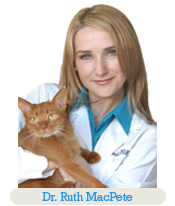
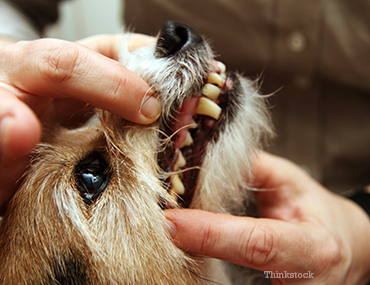
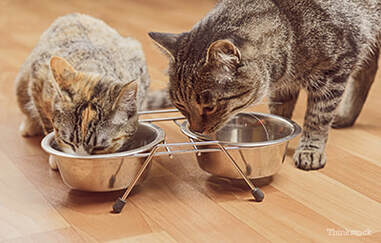
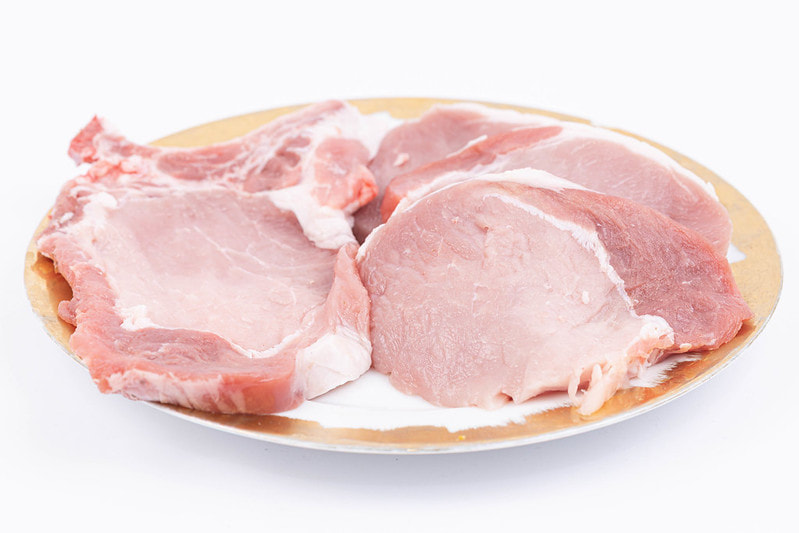

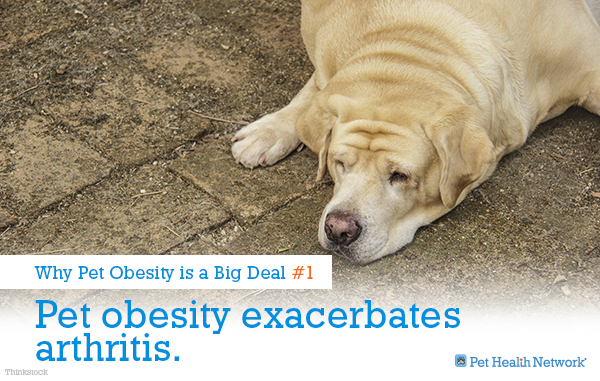
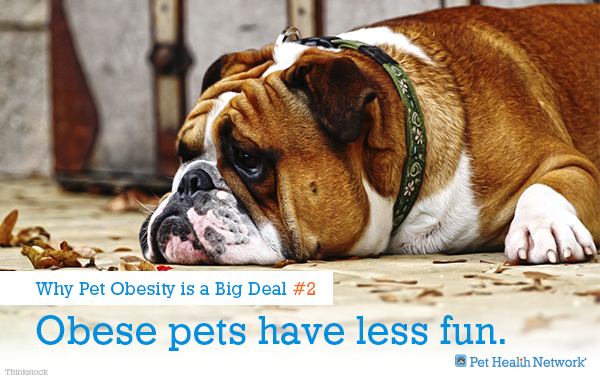
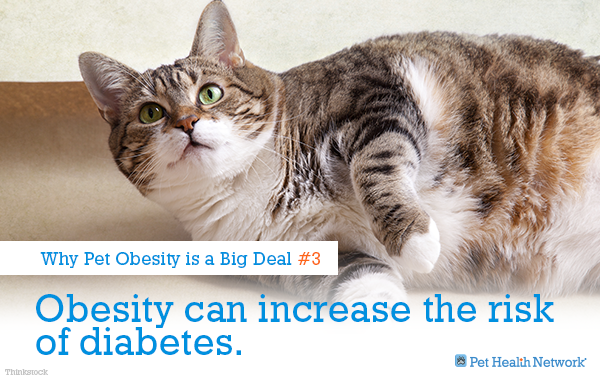
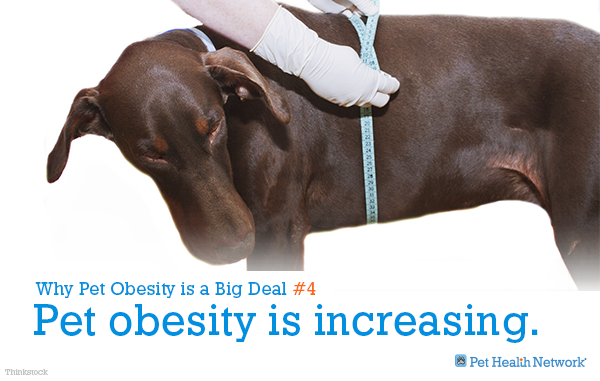
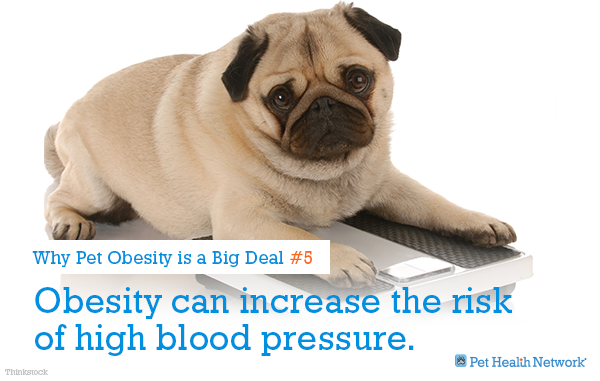
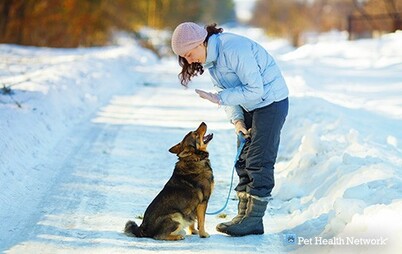
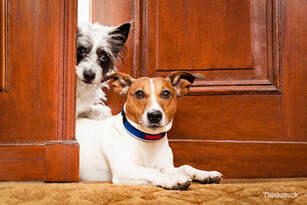
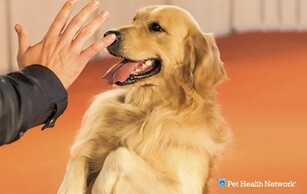

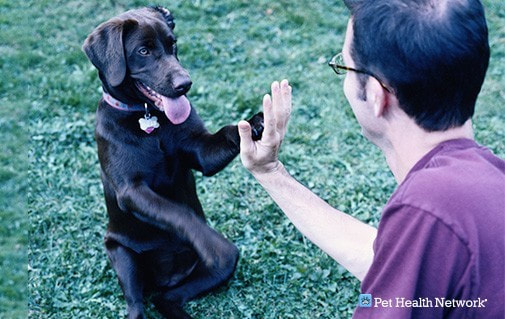
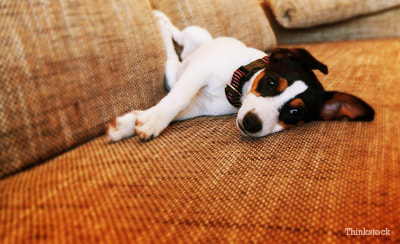
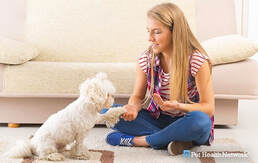
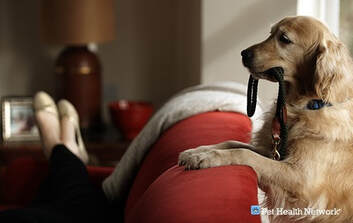
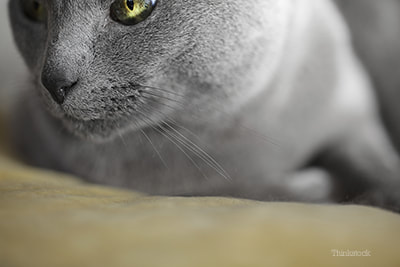
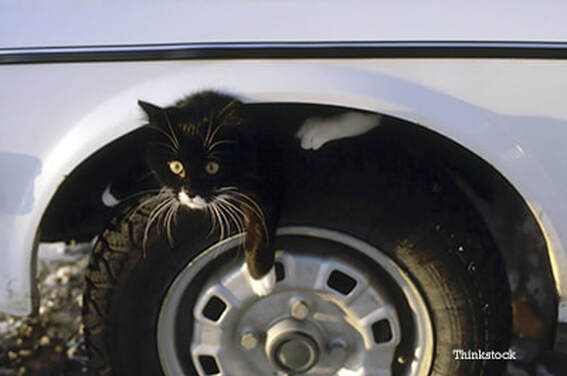
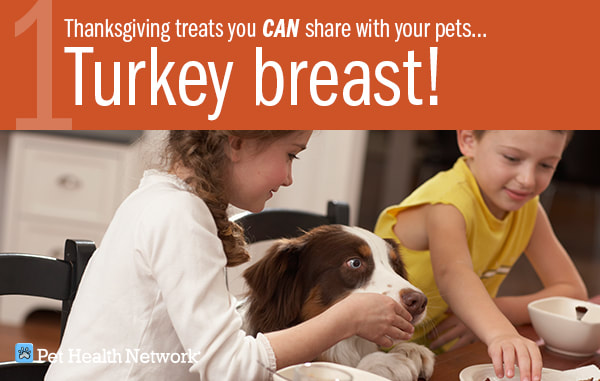
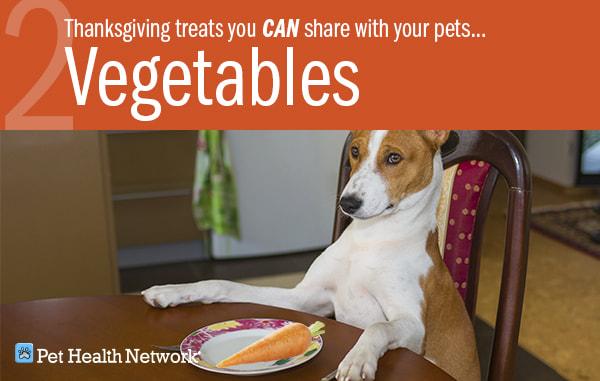
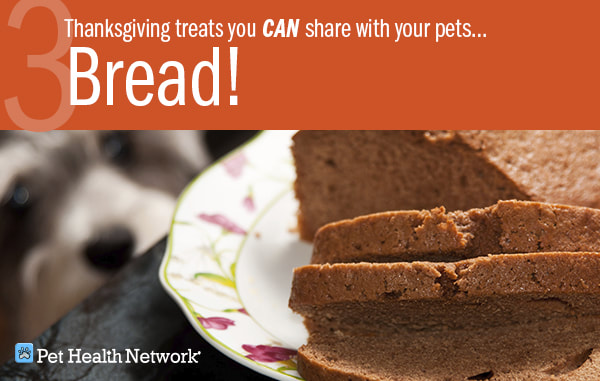
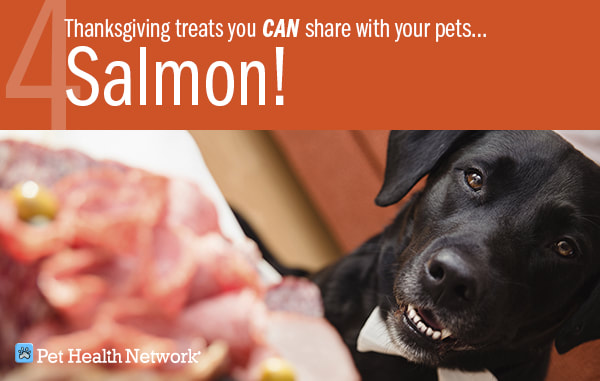
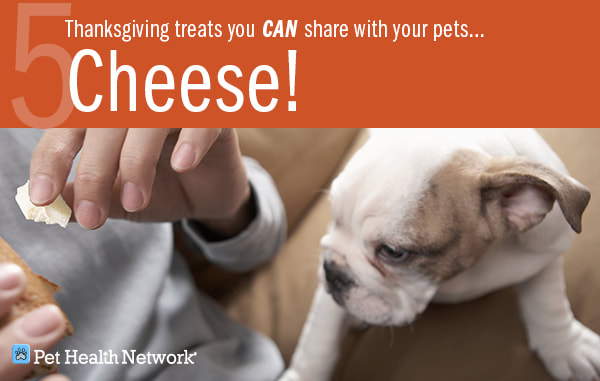
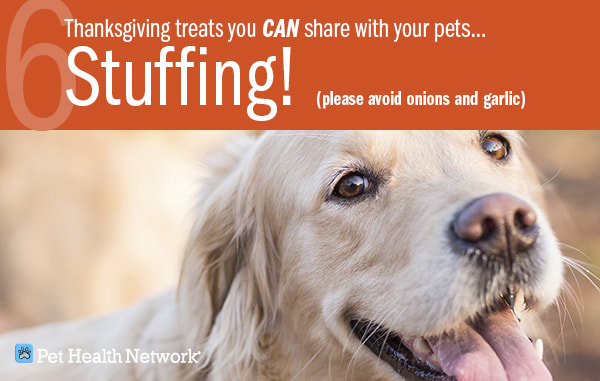



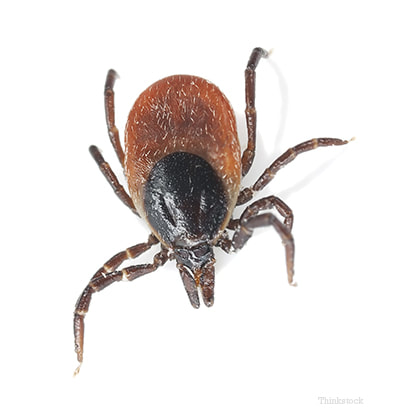
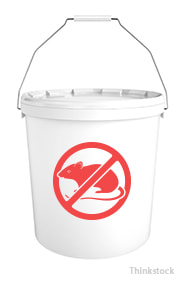
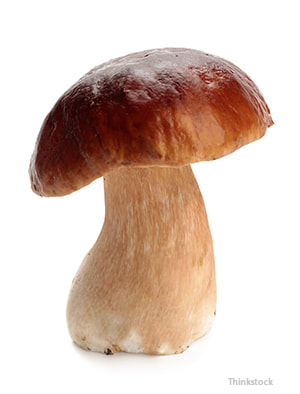
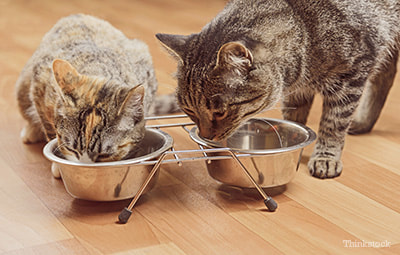








 RSS Feed
RSS Feed
